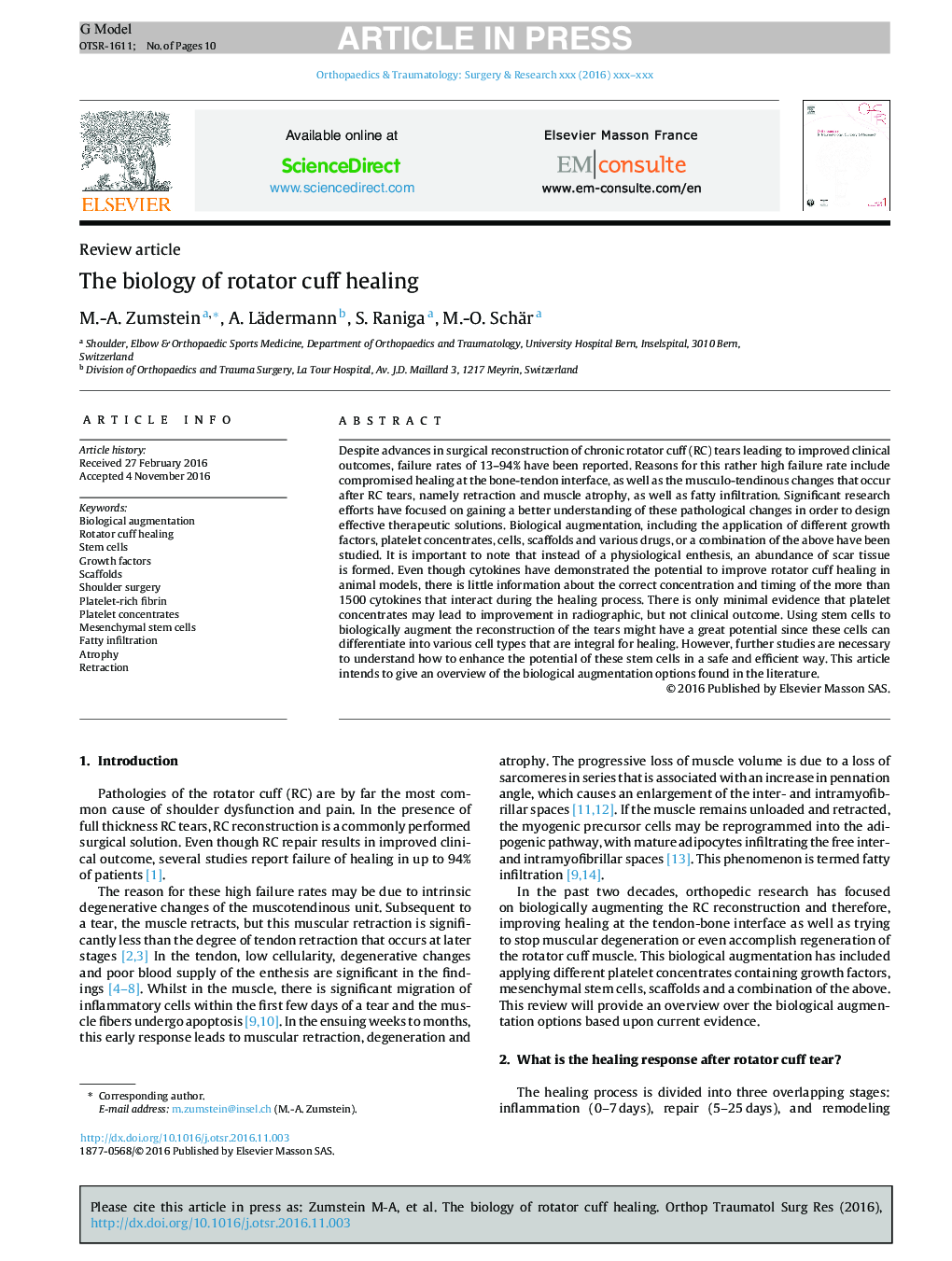| کد مقاله | کد نشریه | سال انتشار | مقاله انگلیسی | نسخه تمام متن |
|---|---|---|---|---|
| 5711178 | 1410921 | 2017 | 10 صفحه PDF | دانلود رایگان |
عنوان انگلیسی مقاله ISI
The biology of rotator cuff healing
ترجمه فارسی عنوان
زیست شناسی از درمان کاف روتاتور
دانلود مقاله + سفارش ترجمه
دانلود مقاله ISI انگلیسی
رایگان برای ایرانیان
کلمات کلیدی
موضوعات مرتبط
علوم پزشکی و سلامت
پزشکی و دندانپزشکی
ارتوپدی، پزشکی ورزشی و توانبخشی
چکیده انگلیسی
Despite advances in surgical reconstruction of chronic rotator cuff (RC) tears leading to improved clinical outcomes, failure rates of 13-94% have been reported. Reasons for this rather high failure rate include compromised healing at the bone-tendon interface, as well as the musculo-tendinous changes that occur after RC tears, namely retraction and muscle atrophy, as well as fatty infiltration. Significant research efforts have focused on gaining a better understanding of these pathological changes in order to design effective therapeutic solutions. Biological augmentation, including the application of different growth factors, platelet concentrates, cells, scaffolds and various drugs, or a combination of the above have been studied. It is important to note that instead of a physiological enthesis, an abundance of scar tissue is formed. Even though cytokines have demonstrated the potential to improve rotator cuff healing in animal models, there is little information about the correct concentration and timing of the more than 1500 cytokines that interact during the healing process. There is only minimal evidence that platelet concentrates may lead to improvement in radiographic, but not clinical outcome. Using stem cells to biologically augment the reconstruction of the tears might have a great potential since these cells can differentiate into various cell types that are integral for healing. However, further studies are necessary to understand how to enhance the potential of these stem cells in a safe and efficient way. This article intends to give an overview of the biological augmentation options found in the literature.
ناشر
Database: Elsevier - ScienceDirect (ساینس دایرکت)
Journal: Orthopaedics & Traumatology: Surgery & Research - Volume 103, Issue 1, Supplement, February 2017, Pages S1-S10
Journal: Orthopaedics & Traumatology: Surgery & Research - Volume 103, Issue 1, Supplement, February 2017, Pages S1-S10
نویسندگان
M.-A. Zumstein, A. Lädermann, S. Raniga, M.-O. Schär,
